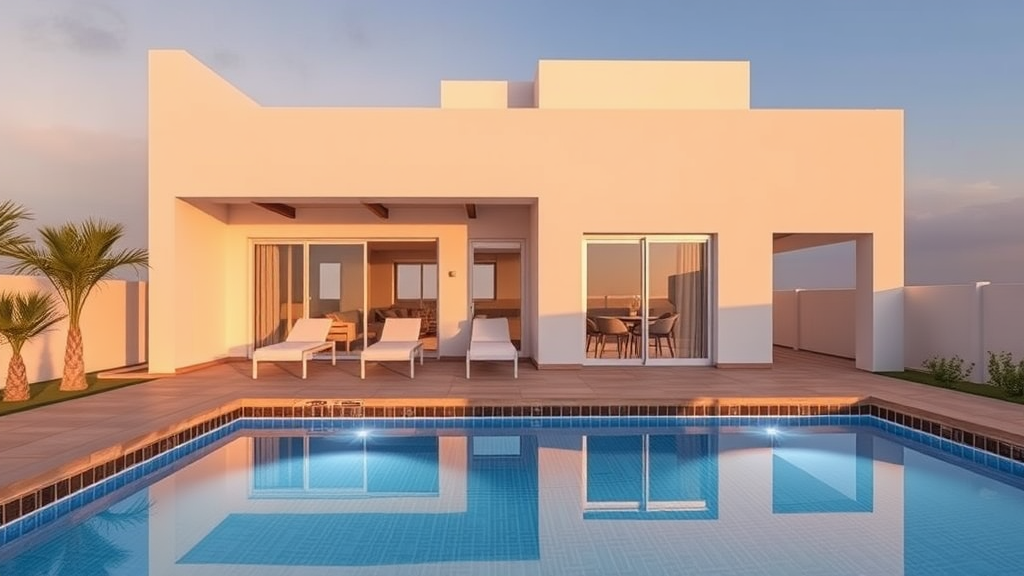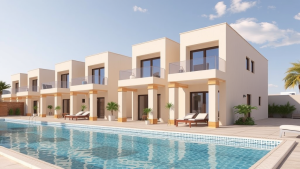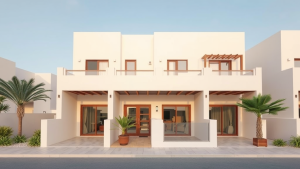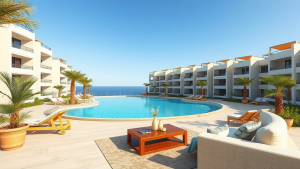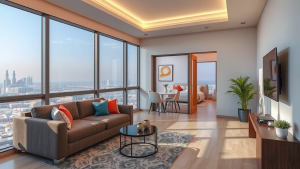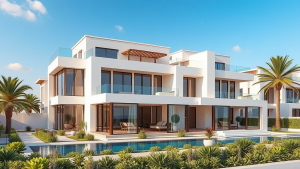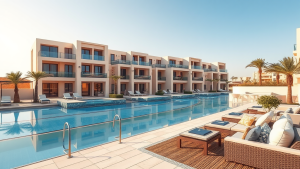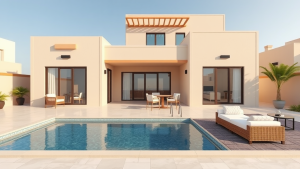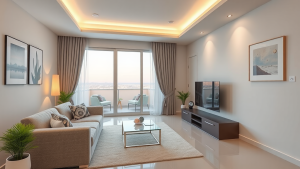Key accessibility features that matter to retirees when buying budget homes
As retirees consider budget homes, it’s important to understand which accessibility features can significantly enhance their living experience. Selecting a home that accommodates their needs is vital for ensuring safety, comfort, and independence. Below are key accessibility features that should be on the lookout for when buying a budget home.
Single-story living
One of the most crucial aspects to consider is whether the home is a single-story property. Multi-level homes can pose mobility challenges, especially for those with limited strength or balance. Single-story homes minimize the risk of falls and make it easier to navigate daily living tasks without stairs, making them an ideal choice for retirees.
Wide doorways and hallways
When you’re shopping for a budget home, pay attention to the width of doorways and hallways. Wider openings accommodate mobility devices like walkers and wheelchairs, allowing for better movement throughout the space. Typical residential doors are usually 32 inches wide, but you might want to seek homes with 36-inch doorways for more convenience.
Non-slip flooring
Flooring can greatly affect safety. Choose homes with non-slip hardwood or tile flooring. Carpeting can become a tripping hazard, especially when it wears down over time. If the home has carpets, make sure they lay flat and are appropriately secured to the floor. Furthermore, having area rugs with skids can also prevent accidents.
Bathroom accessibility
The bathroom is one area where accessibility is crucial. Check for features such as:
- Walk-In Showers: These eliminate the need to step over a tub edge, significantly reducing the risk of slips and falls.
- Grab Bars: Installed near the toilet and in the shower, grab bars provide extra support for getting up and down.
- Raised Toilets: A toilet elevation reduces strain on the knees and back when sitting or standing up.
- Single-Lever Faucets: These offer easier control over temperature and flow with just one hand, which can be beneficial for individuals with limited dexterity.
Kitchen features
In the kitchen, look for elements that make cooking and meal preparation easier:
- Lower Countertops: Installations at a lower height can enhance usability for individuals who sit while cooking.
- Pull-Down Shelves: These can be more accessible for retrieving dishes and food items without the need to reach high.
- Easy-to-Use Appliances: Items like ovens with side-opening doors and dishwashers placed at a more comfortable height can make the kitchen a safer and more enjoyable space.
Outdoor accessibility
Consider the outdoor space as well. Accessible features like:
- Ramp Access: If there are steps leading up to the front door, ramps can make entering the home much easier.
- Handrails: Properly installed handrails along steps and pathways can provide additional security.
- Level Landscaping: Avoiding steep yards or uneven ground can make outdoor spaces safer for moving around.
Lighting solutions
Proper lighting can greatly enhance safety and navigation. Look for homes with ample natural light, as well as:
- Motion-Sensor Lights: These lights automatically turn on when someone enters a space, improving visibility in hallways and entryways.
- Easy Controls: Switches placed at a comfortable height and in well-lit areas can greatly improve accessibility.
Buying a budget home as a retiree should not compromise on accessibility. Focusing on these features can significantly improve daily living and overall quality of life. By prioritizing your needs and preferences, you can create a space that supports your independence and comfort for years to come.
Budget home modifications for enhanced accessibility in retirement
As retirees seek budget-friendly homes, ensuring that these residences are accessible is essential for comfort and safety. Modifications can significantly enhance livability while being mindful of costs. Here are effective modifications that can create a more accessible and enjoyable living environment.
Wider doorways
Wider doorways allow more ease of movement, especially for those using wheelchairs or walkers. When exploring budget homes, consider properties that either already have wider door frames or can be easily modified. Making doorways 36 inches wide is often a practical benchmark for accessibility.
Grab bars and handrails
Installing grab bars in strategic locations boosts safety significantly. Focus on:
- Bathrooms: Near toilets and inside the shower.
- Staircases: On both sides for added support.
- Hallways: In longer corridors for extra assistance.
Choosing stylish grab bars can maintain aesthetics while serving a vital function.
Non-slip flooring
Slips and falls are major concerns for retirees. When considering flooring options in budget homes, opt for non-slip surfaces. Popular choices include:
- Carpet: Choose low-pile options to minimize tripping hazards.
- Vinyl: Offers durability and slip resistance.
- Tile: Look for textured tiles that reduce slipping.
Taking these precautions helps create a safer living space.
Bathroom modifications
The bathroom is often where accessibility issues arise the most. Retirees should look for homes where bathrooms can be easily adapted with modifications such as:
- Walk-in or roll-in showers: Avoid high thresholds and use a shower bench for safety.
- Raised toilets: Make sitting and standing easier.
- Vanities with clearance: Ensure enough space underneath for wheelchair users.
These changes will make daily routines smoother and safer.
Lever-style handles
Replacing traditional doorknobs with lever-style handles is an easy yet impactful modification. They are easier to operate for anyone with arthritis or limited hand strength. This small change can enhance convenience throughout the home.
Lighting improvements
Proper lighting is crucial for safety and comfort. Look for budget homes that allow for the following upgrades:
- Motion-sensor lights: Illuminate dark corridors and pathways automatically.
- Bright LED bulbs: Provide plentiful light while being energy-efficient.
- Adjustable lighting: Use dimmers in living spaces to create the desired ambiance.
Enhanced lighting makes navigating the home easier during all hours of the day.
Smart home technology
Integrating smart home technology can also improve accessibility without breaking the bank. Consider these budget-friendly options:
- Smart speakers: Allow voice-activated controls for lights, thermostats, and more.
- Smart locks: Offer keyless entry for added security and ease of use.
- Video doorbells: Enable retirees to see who is at the door without getting up.
Smart technology can contribute significantly to safety and convenience in daily life.
Exterior accessibility
Outdoor spaces often require modifications as well. It’s essential to assess the yard or outdoor areas for accessibility improvements like:
- Ramps: Provide easy access for individuals who may struggle with stairs.
- Wide walkways: Ensure paths are smooth and safe for walking or wheeling.
- Seating areas: Provide rest spots throughout the yard for those who need breaks.
By making the exterior of the home accessible, retirees can enjoy their outdoor space without difficulty.
Emphasizing accessibility features when searching for budget homes can significantly enhance a retiree’s quality of life. By focusing on these modifications, you can create a safe, comfortable, and welcoming environment that meets your needs as you age.
As you navigate the journey of finding the perfect budget home in retirement, prioritizing accessibility features can significantly enhance your quality of life. Key elements such as no-step entries, wider doorways, and lever-style door handles can make a world of difference, not just in comfort but also in your independence. These features ensure that your new environment is easy to navigate both now and in the future, accommodating any changes that may arise as you age.
Additionally, considering budget home modifications can further boost accessibility. Simple upgrades like grab bars in bathrooms, lower kitchen counters, and non-slip flooring can turn a standard space into a retirement haven. These modifications don’t have to break the bank; many can be achieved at reasonable costs and can add significant value to your home over time.
Remember, a home that is accessible and adaptable allows you to fully enjoy this exciting chapter of your life. By focusing on both key accessibility features and potential enhancements, you can create a living environment that supports your needs and preferences. When making decisions on your budget home, keep these factors front and center. With the right planning and thoughtful choices, your new home can be a comfortable, accessible, and welcoming place for years to come. Enjoy the freedom and peace of mind that comes with a well-considered, accessible living space, and embrace the adventures that await in your retirement.

